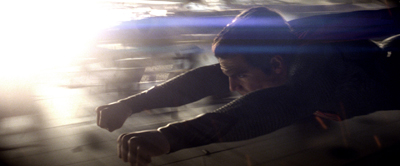
MPC’s VFX team come eye to eye with Superman in ‘Man of Steel’, taking flight with the classic superhero behind a new virtual camera.
MAN OF STEEL: Heart of Steel |
|
The main focus of MPC’s visual effects in ‘Man of Steel’ was on character work and animation, especially of Superman himself. “In preproduction, most of my discussions with production VFX supervisor John D.J. Des Jardin centred on the digital doubles and animation,” said VFX supervisor at MPC, Guillaume Rocheron. |
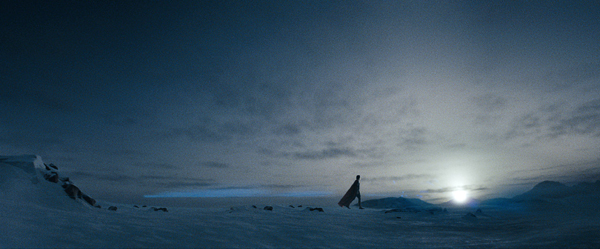 |
|
“Director Zack Snyder was aiming to use camera work and shooting style to overcome the fact that Superman can sometimes be a difficult character for the audience to relate to because of his superhuman abilities and mysterious origins. He was using a documentary style, placing his camera at the centre of the action and looking at the actors full screen and head on. Our character CG and animation had to support and work within this direction.” Perfect MatchBecause the project was going to need frequent, invisible cutting between live action and digital characters, the team needed to create very high resolution digital doubles. For Superman in particular, they wanted to capture all of the actor’s muscles and deformations to build an accurate enough version of him to literally hold up full frame. A similar digital version was built of the Kryptonian character Faora. The villain Zod was a shared build with Double Negative, who also needed to build his custom-fitted armour and therefore first created the base version of his body, which MPC then took over and refined for their shots. The approach to the build began with a CyberScan session and extensive photo shoot with each actor requiring a double, to record every detail. The goal they worked toward was the ability to invisibly switch from live to digital actor at any moment and in any kind of shot, whenever a character performed some superhuman action like taking flight or receiving a monumental blow in battle. |
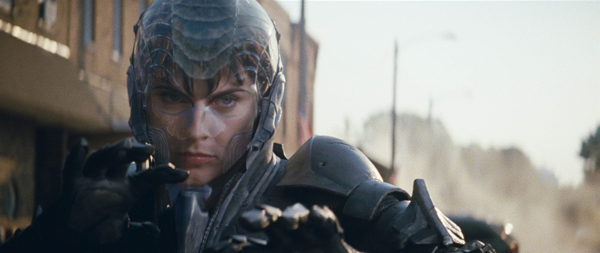 |
|
Looking for enough flexibility to handle the extreme performances led to an interesting development, especially for the climactic Smallville battle, a major confrontation between Superman and the Kryptonian warriors. It often proved difficult for the live action camera to follow the characters when they were flying at extreme high speeds, and further challenges came when trying to show some of these extreme performances full frame and as close to camera as the director wanted. Consequently, to meet the production’s expectations, Guillaume and his team didn’t only want to composite the doubles into shot plates but also to switch easily between live action shots and fully CG shots. Lights, Camera, ActionMPC began developing a virtual cinematography technique called EnviroCam in order to handle this as often as necessary and in whatever manner required. “Because of Zack’s shooting style, we could only capture and use small vignettes of live action of those really heavy battle sequences,” Guillaume said. “So, the goal of our workflow became showing, whenever, however and wherever we needed, Superman or flying or Zod getting punched out.” More of a process than a new technique, what makes EnviroCam different from other virtual camera systems is the combination of shot-per-shot capture of HDR lighting data, very high resolution photography and the spherical 360° capture of the set. “Each time – take by take – the director wanted to convert to all-CG, we captured a complete, spherical, extreme high-res representation of the environment from the same camera position giving us, say, a 5K dome revealing that scene at that moment in any direction,” Guillaume explained. |
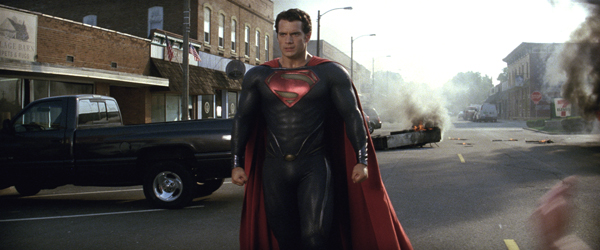 |
|
“There is nothing so new about high-res photography or HDRI, or the motorised head we completed the capture with, but the combination of this data used in post with our high quality doubles and animation gave the production and us the flexibility we wanted. At any point in the shoot we could create digital takeovers not only of the characters but everything else in the shot, perfectly. Thus, when Superman takes off and flies we can continue framing him as a CG character with our virtual camera and don’t have to bake any of that action into pre-defined moves – we can just ‘follow’ and frame the sequence as the director wants it to unfold. About Control“Often for shots and sequences like these, the DP uses wide establishing shots with non-specific camera moves that don’t necessarily match the camera style in the rest of the film. But here, the traditional process of shooting empty plates and putting characters in later wasn’t going to work. The ‘Man of Steel’ action and our animation were too extreme. The cameraman couldn’t know in advance what speed to move at or exactly when to move or wherever to look to catch the right view of Superman. He really had to move fast and the camerawork had to show this, elegantly, and make it readable. “So we needed a level of control we had never had before, and tell the story at closer range. Because we can reproduce a virtual, lit version of any plate quite readily with this system, we can transition many aspects and elements of the scene, precisely frame the hero and animate the shot in detail - and then transition back to the live, back and forth. The result is an uninterrupted shot or sequence that doesn’t compromise the framing or interfere with the camera work." |
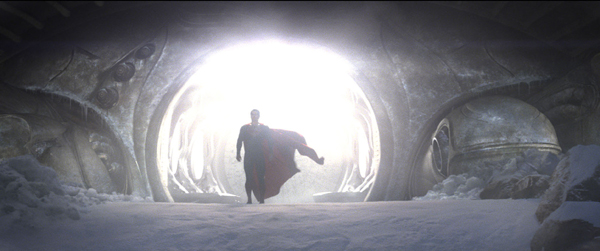 |
Cape ForceAs mentioned, Superman doesn’t have an expressive personality in the normal, verbal sense. To overcome that quality, this movie not only gives him the freedom of his natural extra-human moves but also special expression through his famous cape. Early discussions about it considered the cape as an extension of his body. Guillaume said, “When you look at the original comic book Superman illustrations, you can understand immediately if he is flying fast, extremely fast, hovering or crash landing. The reader knows - wordlessly - what is happening.” Whenever Superman flies, he has a distinct take-off and landing, and therefore they wanted to give the cape similar flaring effects, re-enforcing his intentions. In terms of silhouettes alone, these are critical to his followers and always include his cape’s pose and not only the pose of his own body. They decided to shoot without a physical cape specifically to allow them design it properly in each shot with just the right look. Sometimes, when he is flying past at speed, it shows as no more than a streak. Flow, Shape, Speed“In our ‘first flight’ sequence, the first time the audience sees the fully fledged Superman emerging from the Fortress of Solitude, you don’t see him fully in camera for a few moments, but as soon as you glimpse the silhouetted body and cape you know – that’s Superman. For that reason, we animated the cape as we would a character, complete with a rig. We could animate a low resolution version of it to hit all the key poses, identifying the flow, shape and speed. After showing this to Zack, we could sign off on what the cape would be doing before going on to the actual cloth simulation.” |
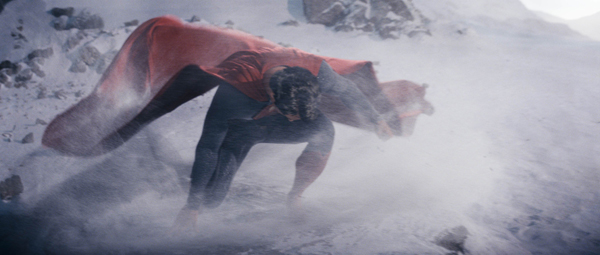 |
|
A number of tools within MPC’s cloth solver were used to read those animation keyframes, still allowing the result to feel cape-like while hitting all of their poses, matching the flow and speed and taking the shape of the flare. The ability to control it was as important as maintaining a natural look. Viewers should notice it, but as an integrated aspect of Superman’s strong identity, not as something odd or out of place. Flight TrainingThe ‘first flight’ sequence follows Superman’s journey from the fantasy environment of the Fortress of Solitude, where he emerges in his cape into a complete arctic environment, its traditional location. As he learns how to fly, the digital Superman’s first flight takes him over the deserts, plains and canyons of Earth and up into the stratosphere. It was interesting for MPC’s team because it required the development of the numerous environments to show his progress over the surface, as well as concentrating on the way he and his cape looked in full, high speed flight. “For much of the sequence design, we basically started with the previs prepared by Pixel Liberation Front with only a few sketches from the art department,” Guillaume said. “PLF’s team had worked through it with Zack, blocking all the beats, and we carried on evolving the sequence according to those requirements. For example, Superman has to fly over a canyon in America, then a desert and then Africa – which all imply certain looks and elements. Pass by pass, we designed shots and digital environments. Then PLF would do another pass, and we would make refinements to it, create more realistic cameras - and so on. Many of the sequences were developed this way.” |
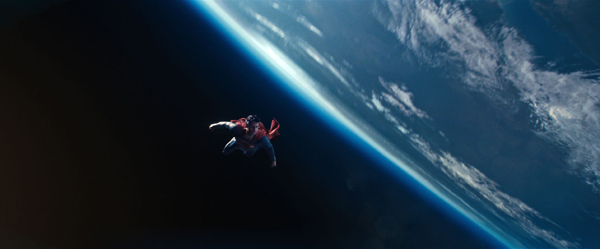 |
Kryptonian SpacecraftMPC had the responsibility of building three different Kryptonian spacecraft, working with the art department’s drawings. They all shared a consistent engineering style, and MPC took over the refinement and functionality of mechanical features as they built the ships. Kryptonian design is very organic with elegant, precisely curved, surfaces inspired more by insects and natural elements than aircraft or other earth-style machinery. Within this look, the ancient Scout ship had to show an altered design and look worn and battered because, by the time Superman discovers it lodged in the ice, it had been there for some 20,000 years, built when the Kryptonians were investigating the surrounding planets. The Drop ship and Escape Pod, in which Superman rescues Lois Lane, were in the modern style, much more like the ships seen on Krypton at the beginning of the movie which look sleeker and easier to manipulate. When Clark Kent discovers the Scout ship, climbs aboard and starts it up to haul it from the ice, MPC handled the shots that follow showing its icy cover melting and collapsing, using a simulation. “Of course, we had no specific reference of ice melting and breaking up at such a scale. It wasn’t a natural phenomenon we could literally re-create with a simulation. We found some scaled down reference and had to rely on our instincts for what should happen to the ice at the surface,” Guillaume said. |
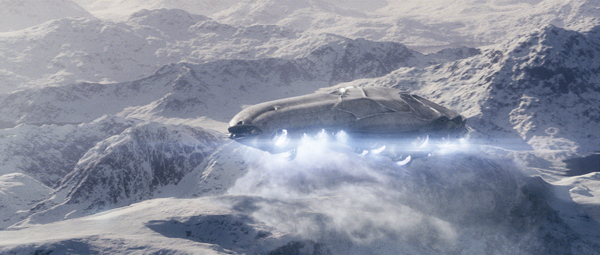 |
Directable DestructionThe main destruction simulations in this movie, of which there a number, were based on MPC’s solver Kali for complex destruction and deformations, which they have been developing over time and consecutive projects. As a simulation tool it extends beyond the scope of rigid body solvers because it focuses on programming the properties of an element’s material so that it will break up realistically. MPC’s CG modelling and animation pipeline is based on Maya, Nuke and RenderMan, and is constantly evolving with a lot of proprietary tools for volumetrics, fluids and cloth, and caching, as well as Kali. “On ‘Sucker Punch’, for example, we were developing Kali especially to break wood,” said Guillaume. “The wood doesn’t simply explode – first it bends, then cracks, splinters and so on in a characteristic way. From there, we used it to destroy materials the on the last two ‘Harry Potter’ films, ‘X-Men’ and ‘Life of Pi’. It’s a standard now for us. On ‘Man of Steel’ we refined its layering ability and speed of iteration. It was already prepared to destroy all types of materials from wood, brick and concrete to tarmac, glass and metal that we needed for scenes like the battle in Smallville’s main street environment, so we took the chance to work on speed, control and art directability.” Heavy DamageKali got a workout on the Smallville battle, Superman’s climactic confrontation with the Kryptonians, where the superhero and super villains cause some heavy damage to all of these materials, but with attention to the layers involved in such objects as the tarmac street or the brickwalls. Throughout the build they considered – how do these elements break? Including more details gave them subtler results. “If a character gets smashed into the tarmac, you can watch the way our cracks propagate along the surface. The bricks shatter in a very specific way. Each one was to be as realistic as possible, and therefore Kali was the ideal tool to use for this sequence,” Guillaume reflected. |
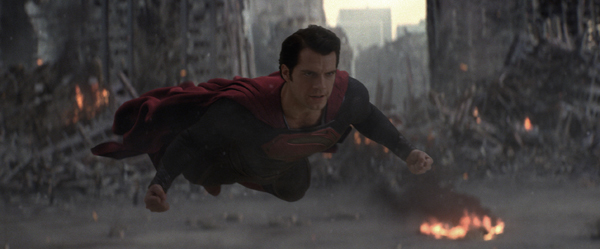 |
|
“Every object in the Smallville battle that breaks up was built as a 3D asset, whether it existed on the physical set or not. We knew in advance which buildings we were going to destroy, or which section of road. Furthermore, many shots had to be entirely CG, using an EnviroCam background plus CG characters. In those instances, EnviroCam generated the footage and we added the characters, the 3D assets to destroy, then the dynamic lighting for the updated set with the associated shadows – plus any other details that did not already exist.” Flowline is a simulation tool that MPC continues to develop with its creator Scanline for fluids - water, fire, smoke, explosions and dust. It is by now well-integrated into their pipeline. In the case of Smallville, everything that broke up generated large quantities of dust. Meanwhile explosions, fire balls and smoke trials erupted as well, much of which could be handled with Flowline. Dust to Dust“Consequently, some shots each contained three very large scale simulations. An example are the shots in which our all-CG Kryptonion Namek brings down an A-10 aircraft which explodes in a huge, detailed fire ball and trail - a giant fluid simulation of smoke, fire and an explosive detail that takes out a full city block. To enhance the realism of such massive simulations, Flowline’s rendering backend is managed through further custom tools used to up-res the fluid resolution to increase the level of detail at render time. |
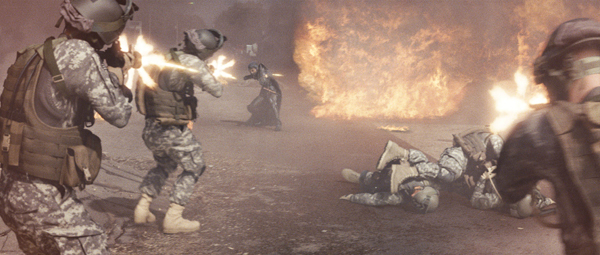 |
|
“This ability was essential to allow us to create and sell the required scale in these effects. So, really, Flowline creates the sim but the scene-specific details and looks come via our render script, getting all the Flowline factors into RenderMan where we can apply filters, advection and textures that add the resolution to the fluids,” Guillaume explained. Namek is an 8ft warrior who arrives on Earth with Zod and Faora to bring down Superman and seize the planet. Not a double but a full-CG character, Zack chose an on-set style of capture for Namek’s performance, mainly to avoid interrupting the flow of the shoot. The stunt actor wore a performance capture suit and was shot with an arrangement of witness cameras and tracking markers. This camera set-up was designed to be fairly quick to configure and set up each time, and allowed MPC to triangulate the performance later in post when the team was replacing the actor with their CG character. Once his sequences were shot, Namek’s model was then built over about two months based on the stunt actor’s anatomy and face, fitted with Kryptonian armour and his performance retargeted to match the 8ft design. On or Near Set“Zack wanted to shoot the scenes coherently for this movie wherever possible, not stop and break things up with shoots in special locations like a capture volume. Pace was important during a shoot like this, and doing everything on or near the set keeps the director in control. The EnviroCam itself was a help, but could have resulted in constant interruptions and delays, so we learned to streamline the process. Each time we decided to use it, we could usually capture the set in about three minutes.” |
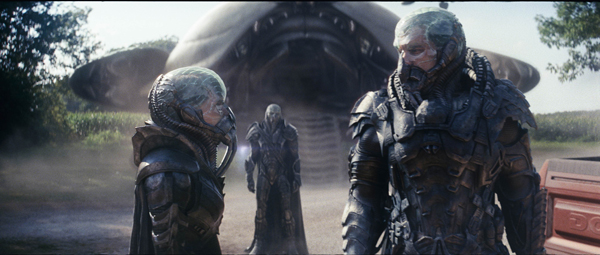 |
|
When Superman rescues Lois Lane in the Escape pod, MPC also had to create the environment at 10,000ft. They could effectively use a combination of matte paintings of clouds and of the ground viewed from that height, but the clouds near the characters had to be 3D to allow enough parallax and set up realistic lighting and interactions. A tool was written to generate cloud shapes from geometry that the artists could sculpt into a cloudscape. Then they ran a series processes to convert the geometry into a fluid with layers of advection, which would let them build up the specific details like deformation from wind and subsurface qualities. Advection is the current-like force that moves water through the atmosphere to form clouds. “After that, we had an interesting balance to work out between the lighting and volume density to make the clouds look real,” said Guillaume. www.moving-picture.com Adriene Hurst also interviewed Director Zack Snyder about VFX, visualising and making 'Man of Steel'. |
|
Words: Adriene Hurst |


















